Ag Allies
Why Bird Conservation?
Identifiable by their distinctive reverse tuxedo coloring and cheerful, R2-D2-like song, Bobolinks are memorable birds. However, like many of the grassland bird species who have experienced a 53% reduction in their population numbers since 1970, Bobolinks are suffering severe declines because of habitat loss, agricultural management changes, and other factors. Luckily, the Ag Allies program readily embraces the challenge of protecting habitat for Bobolinks and other grassland bird species. Ag Allies, a collaborative initiative operating out of the Somerset County Soil and Water Conservation District (SCSWCD) in Maine, brings together land trusts, landowners, and farmers for the preservation of grassland habitat across Maine.
Bobolinks rely on grasslands and agricultural fields for nesting, but this habitat is becoming increasingly less available due to development, loss of farms, and changes in agriculture. Laura Lecker, director of the Ag Allies program, says that Bobolinks are especially impacted by changes in timing and frequency of hay harvesting in Maine. “The fields are being cut earlier and more frequently in recent decades, often once and sometimes twice during the nesting season, which makes it very challenging for birds to fledge young successfully,” Lecker said. “So, Bobolinks and other grassland species are truly in need of conservation efforts.”
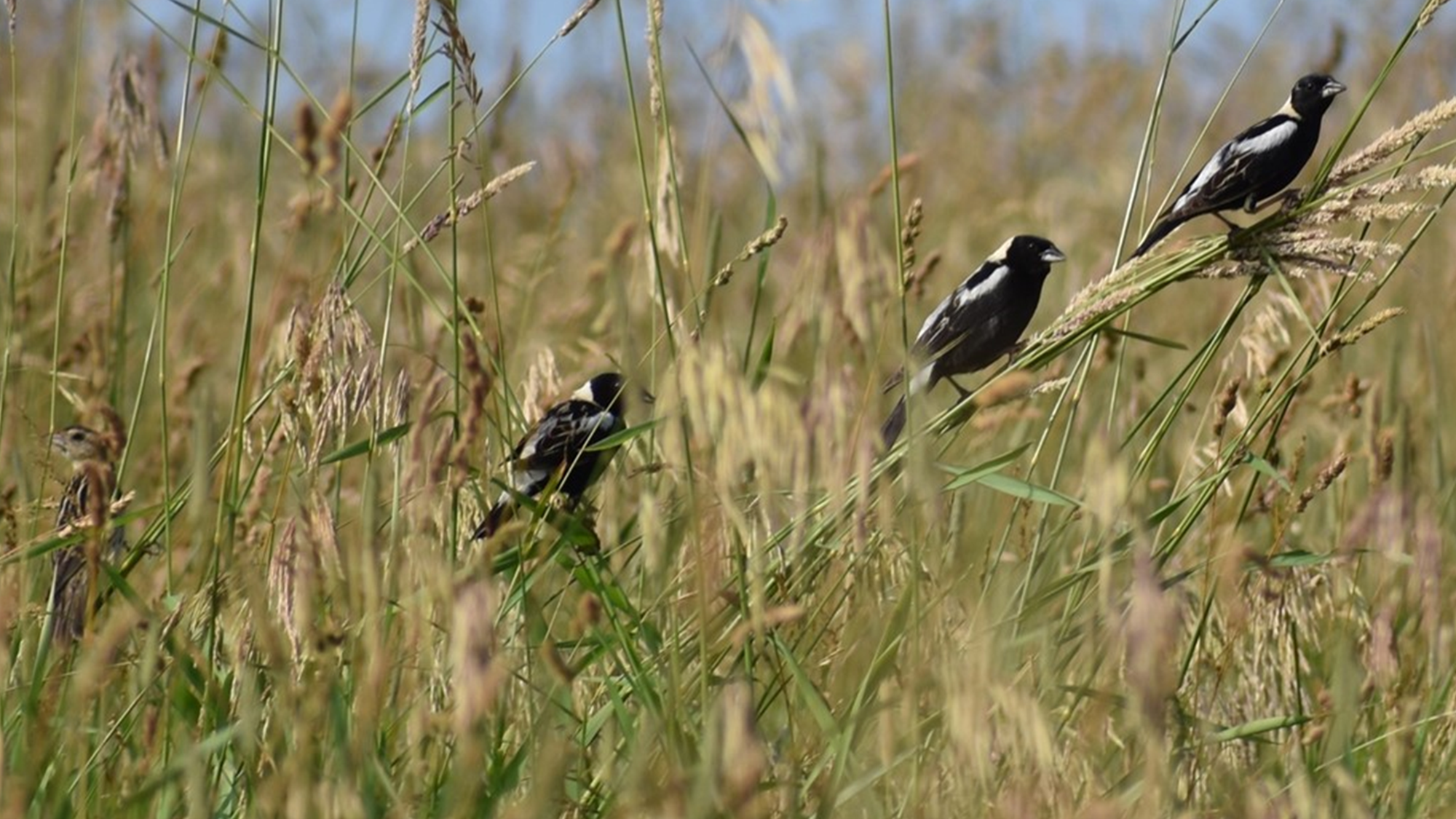
Ag Allies leverages the technical expertise of the Ag Allies program managers with additional help from Maine’s Inland Fisheries and Wildlife field biologists, the community reach of land trusts, and the participation of landowners and farmers to ensure that Bobolinks and other grassland birds have the habitat they need to thrive in Maine and co-exist with sustainable farming practices. This coalition of stakeholders allows Ag Allies to work with landowners one-on-one to incorporate the best management practices that benefit Bobolinks and grassland birds, while still supporting farmer livelihoods.
Spotlight Resources: Partnerships, Farmer Incentive Payments, and eBird
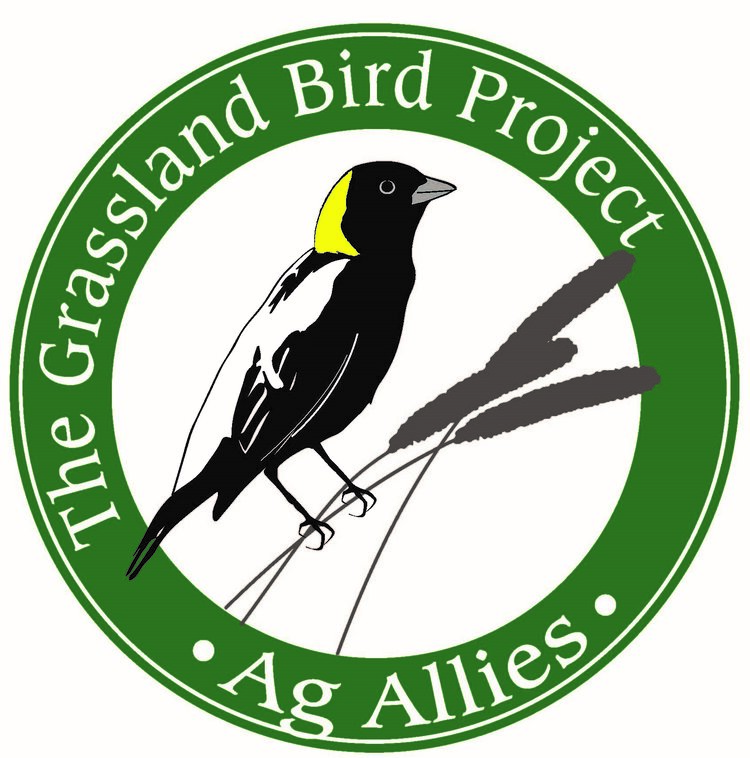
Partnerships are the crux of Ag Allies’ work and ensure they have both a far reach in the Maine community and the ability to work one-on-one with farmers. Prior to receiving a Cornell Land Trust Bird Conservation Initiative (CLTBCI) small grant in 2018, Ag Allies had not engaged with land trusts as a partner group, Lecker said. Now, this collaboration is integral to the mission of Ag Allies.
“We wouldn’t have made that connection without the Cornell Lab because we were sort of an unknown entity a few years ago as far as land trusts were concerned. Having the CLTBCI funding to specifically focus on land trusts opened that door for us, and it’s been a great partnership.”
Ag Allies has another unique tool when working directly with farmers: an incentive program. The goal of farmer incentive payments is to offset some of the financial uncertainty that accompanies making changes to farming practices when individuals and families depend on the land for their livelihoods. This ensures that farmers who incorporate new practices, such as delayed mowing for the benefit of birds, also receive support. While the incentive payments are not enough to fully offset the profit loss, financial compensation paired with technical support from Ag Allies staff allows farmers to be active participants in the initiative and work to achieve sustainable practices that benefit both farmers and birds, Lecker said. “Some of the landowners had no idea what a Bobolink was, but now they’re taking friends and family out to their fields, saying, ‘Hey look, these are Bobolinks and they come back to these fields every year.’ This really helps them take ownership of the new practices, which is very important.”
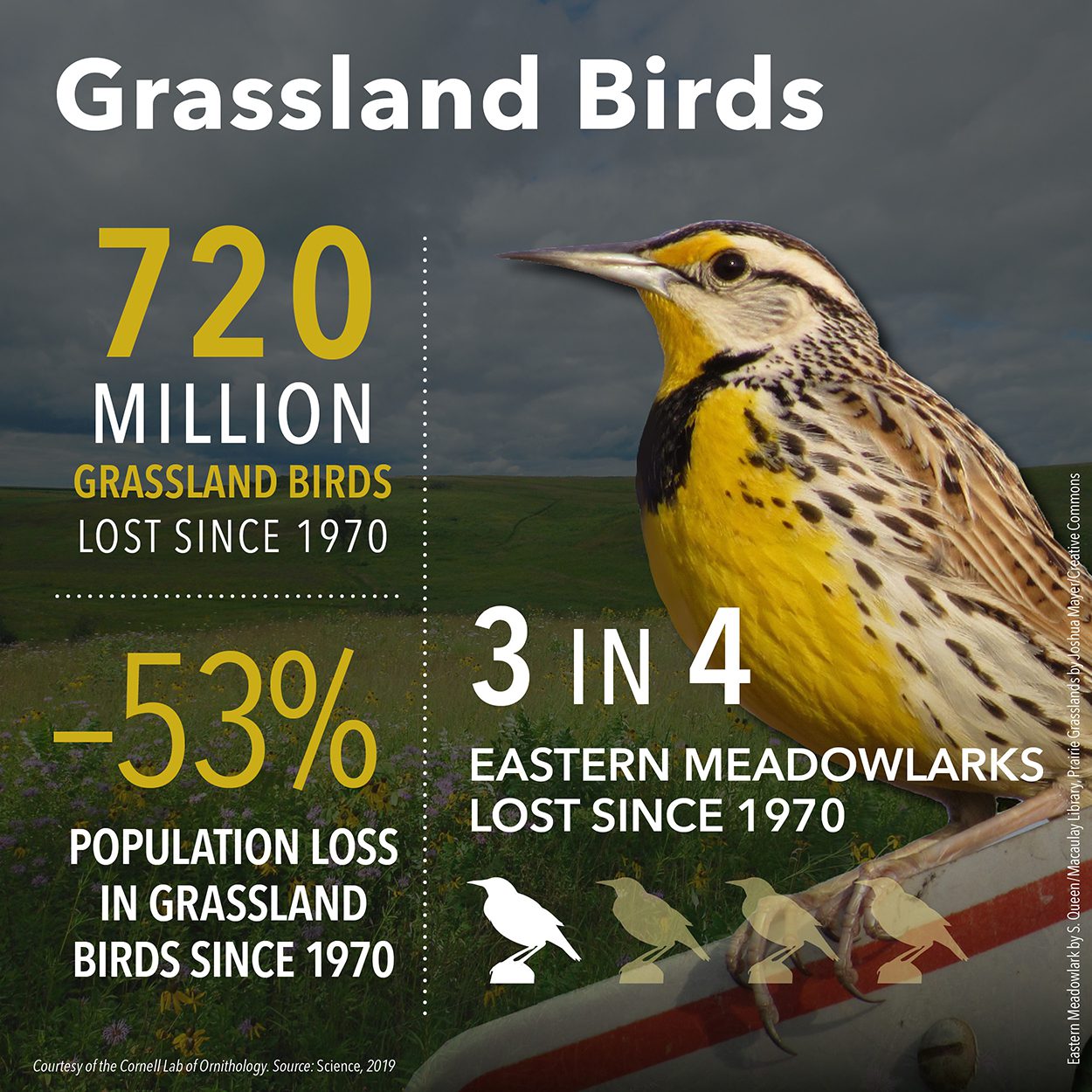
eBird, a free online bird checklist program, is a valuable tool to quantify the anecdotal evidence of Ag Allies’ ecological success, revealing the impact that changes like delayed mowing can have on grassland birds. The impact of management shown through eBird data is key in effectively telling the story of Ag Allies, Lecker said. In addition to increasing numbers of nesting Bobolinks, eBird data from management sites also show higher numbers of nesting pairs of Eastern Meadowlarks, another bird suffering from population declines as a result of grassland habitat loss. By entering the occurrence of bird species into eBird, Ag Allies is filling data gaps on private lands, contributing to conservation science, and making these data more accessible for land trusts and other organizations to use for land planning and protection.
Making the Connection
Ag Allies, with CLTBCI support, worked with 15 land trusts in 2023. These land trusts have made management changes to benefit grassland habitat on their fee-owned properties or properties with conservation easements, such as delayed mowing and restricted dog-walking during the bird breeding season. For example, Ag Allies is currently partnered with the Georges River Land Trust to provide technical assistance to their conservation easement landowners interested in modifying their mowing schedules, which can have a substantial impact on grassland birds. For instance, one Cornell study estimated the mortality of Bobolink nestlings to be 94% if hayfields are mowed before birds have fledged and left their natal field.
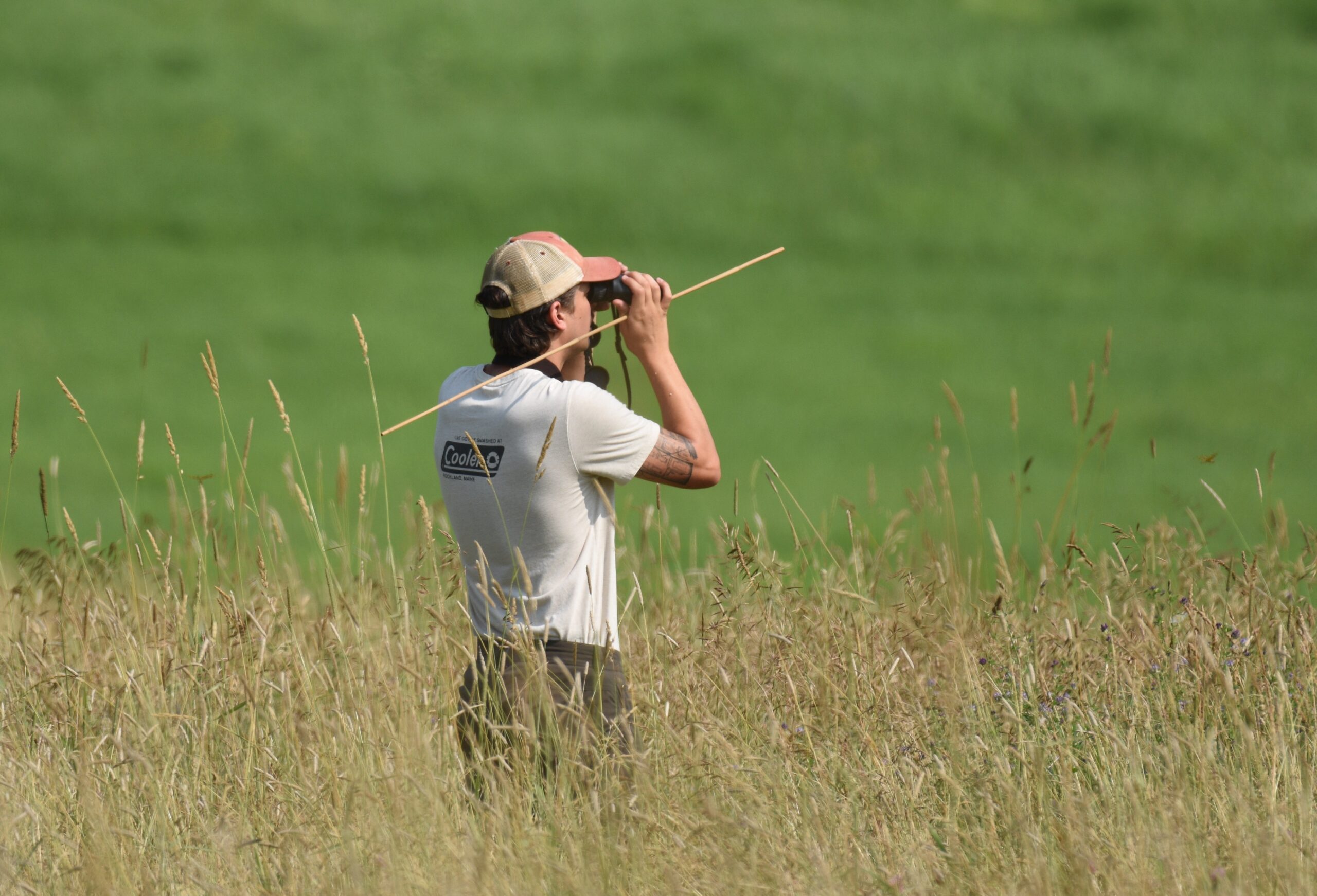
Collaborating with land trusts and other conservation organizations has also greatly increased the outreach of the Ag Allies program. Sharing program information through the Maine Land Trust Network and Maine’s Regional Conservation Partnerships, for example, has recruited new land trusts and private landowners into the program and increased the enrolled acreage of protected habitat. In 2023, Ag Allies saw the addition of 50+ new farmers, land trusts, and other landowners into its network of participants, resulting in a total of 120+ partners throughout Maine and more than 2,000 acres of grassland habitat managed for grassland bird breeding success. All that habitat supported approximately 700 breeding pairs of grassland birds, resulting in the successful fledging of roughly 2,100 hatch-year birds.
In addition to reaching a new landowner base, land trusts and partners have facilitated increased communication with the public and their membership on behalf of Ag Allies. Lecker explains that this public outreach is especially important for connecting the greater community with the farmers who are making efforts to integrate bird-friendly management practices. “Having these birds on our working landscapes is a benefit to all of us, and land trusts can be a helpful link between the general public and the farming community,” Lecker says. “It is critical to educate people about the needs of farmers and the challenges that these farmers are taking on to create this space for the birds. Our partners are integral in helping us support and celebrate the farmers who are doing this work.”
Advice to Other Land Trusts
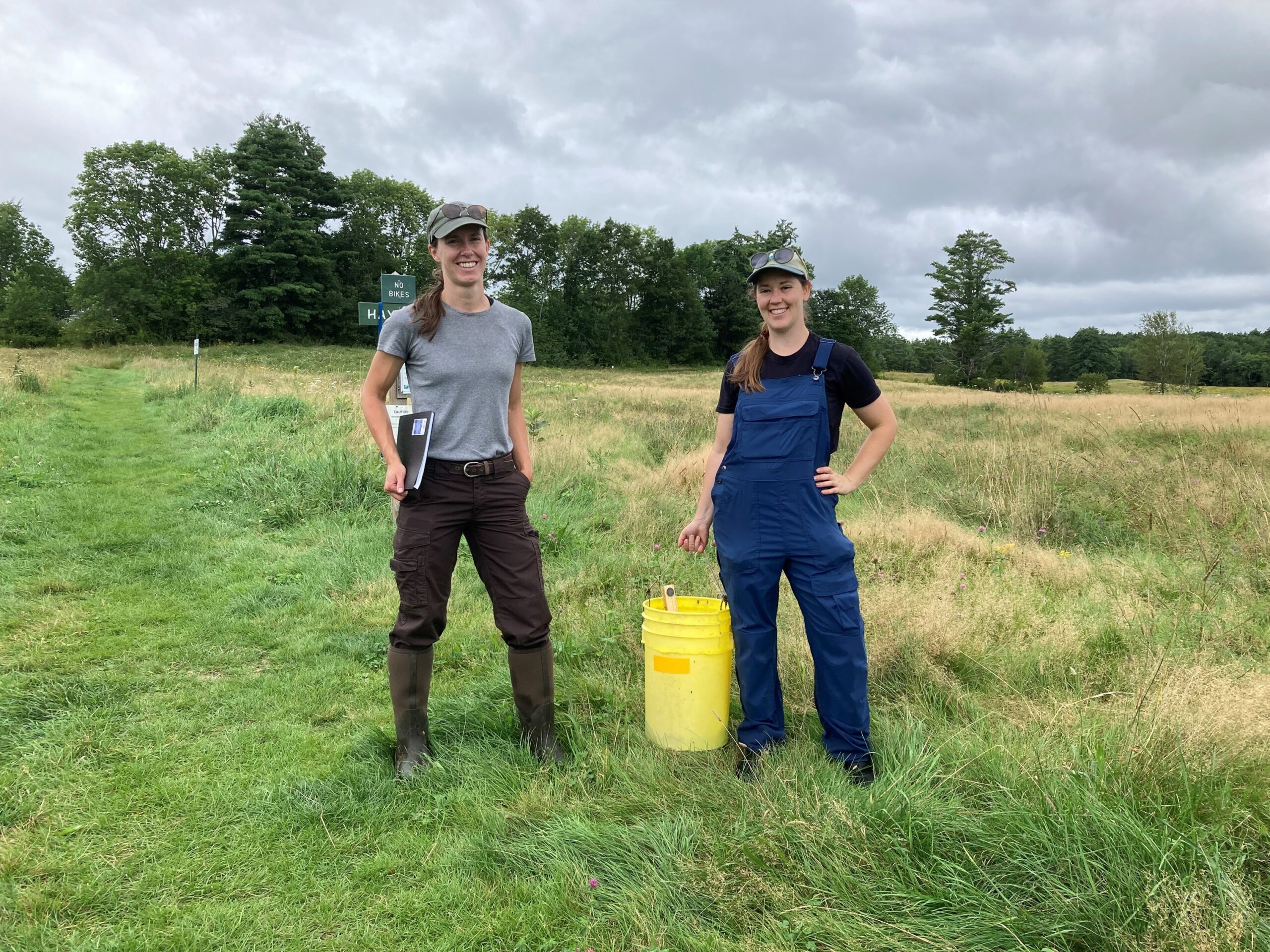
One of the strengths of the Ag Allies program is its ability to cultivate genuine relationships with individual farmers and land trusts who work with farmers to find management changes that are the best fit for both birds and landowners. Integrating the Ag Allies team into land trust discussions with farmers helps reconcile the goals of land managers with the needs of wildlife and conservation.
Furthermore, Lecker recommends that land trusts continue to cultivate relationships with each other, as well as the farmers with whom they work. Information sharing amongst land trusts can help organizations share best practices that work for them when supporting grassland birds, affirming they are on the right track for bird conservation or providing minor shifts to best optimize grassland habitat. These relationships may also be a source of practical advice when writing leases and conservation easements for agricultural properties.
Next Steps
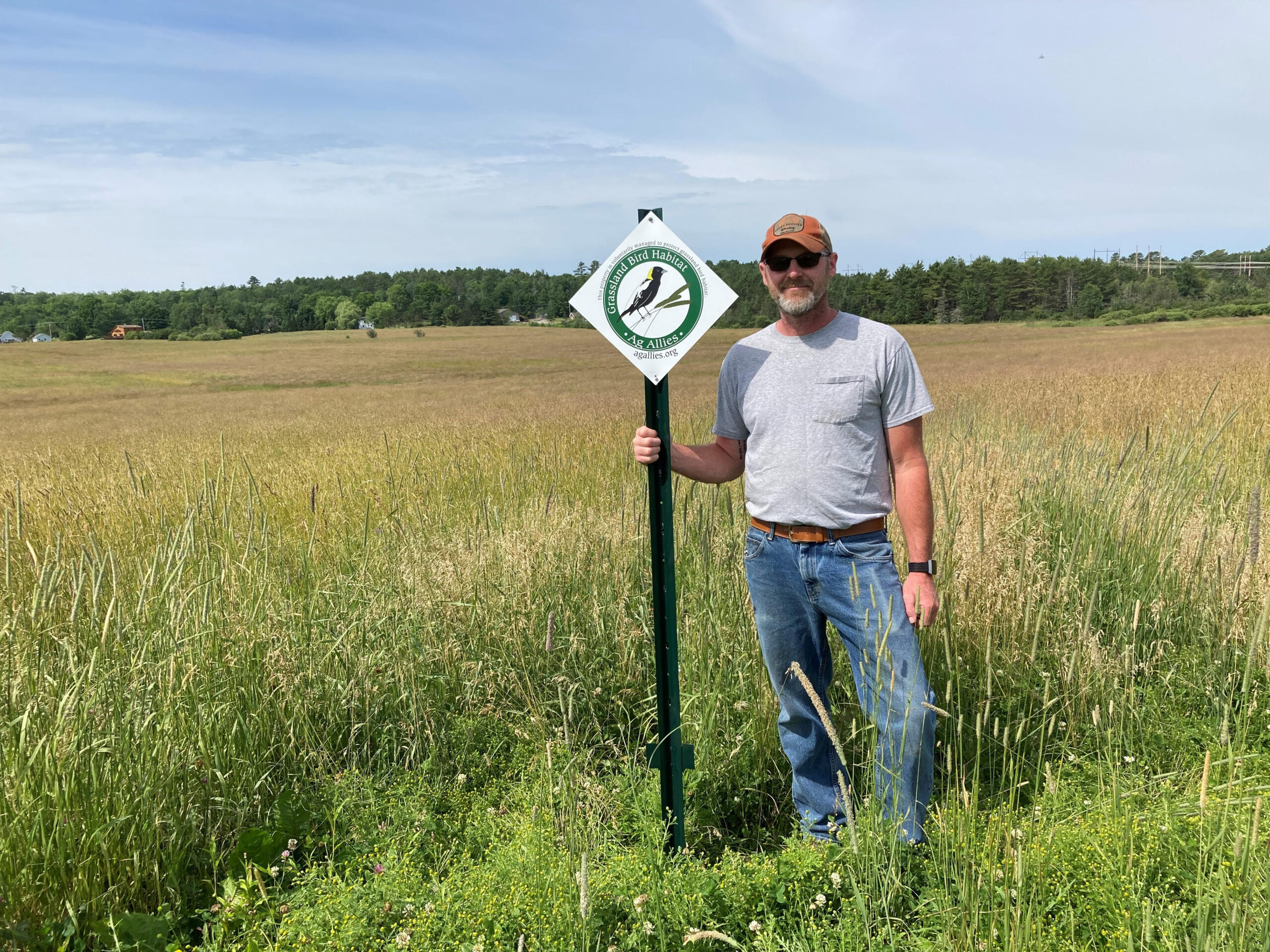
Ag Allies continues to work with many partners throughout Maine and has become a Conservation Collaborative through the CLTBCI, partnering with the Northeast Bird Habitat Conservation Initiative, with a focus on field refurbishment work. In addition to fields that are mowed too often to provide successful nesting habitat, other land trusts own fields that are no longer attractive habitat for grassland birds due to invasive species or woody vegetation encroachment from succession. To address this problem, Ag Allies, in conjunction with the US Fish and Wildlife Service Partners Program will provide technical and financial support for land trusts to undertake field refurbishment practices in 2024. These demonstration sites will showcase best management practices for grassland restoration and thus provide important outreach opportunities.
Also this coming year, Ag Allies is entering into a new two-year contribution agreement with the Natural Resources Conservation Service in Maine (NRCS). Ag Allies staff will help connect interested participants with NRCS conservation programs, such as the Environmental Quality Incentive Program (EQIP) and Conservation Stewardship Program (CSP). This partnership with NRCS will extend the reach for both Ag Allies and the NRCS and provide greater flexibility and options for landowners interested in creating and conserving nesting habitat.
The work of Ag Allies has challenged the notion that economic wellbeing and environmental conservation are at odds by collaborating with and supporting farmers while simultaneously improving grassland bird habitat. Lecker notes that working directly with farmers has been a key aspect of the program.
“Partnerships are so important, and I have been truly impressed with our farmers in the state of Maine—farmers of all types are really stepping up to do what they can to create and conserve habitat,” Lecker explains. “The program would be nothing without their generosity and conservation spirit. We’re all working to make a difference for the birds.”


